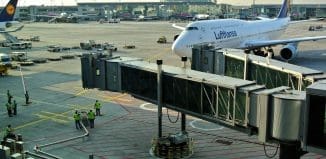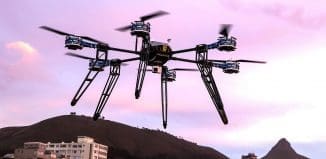The international campaign against ISIS
This post is also available in:  עברית (Hebrew)
עברית (Hebrew)

Attacks by the US and the coalition in Syria and Iraq
- U.S. and coalition airstrikes in Syria and Iraq continued during the week. This week U.S. and coalition aircraft carried out dozens of airstrikes in Syria and Iraq using fighter planes, bombers, and unmanned aircraft.
Following are the locations of the airstrikes (CENTCOM website):
- In Syria, airstrikes centered mainly in Kobani (Ayn al-Arab), where fighting has continued for several months and is still ongoing. Airstrikes were also carried out in the area of Al-Raqqah and Al-Hasakah. The airstrikes destroyed ISIS battle positions, vehicles and a tank.
- In Iraq, airstrikes were carried out in a large number of locations, including Baiji, Rutba, Taji, Baqubah, Al-Assad, Sinjar, Ramadi and Mosul. These airstrikes destroyed battle positions, firing positions, vehicles, car bombs, heavy machinery, firing systems, buildings, and more. Near Ramadi, boats and a barge belonging to ISIS were destroyed. According to unconfirmed reports, the attack in Mosul killed a senior ISIS operative named Salim Mula Ghanem, who was responsible for finances in the Mosul area (www.understandingwar.org, January 19, 2015).
- During a visit to Baghdad, John Allen, coordinator of the international coalition against ISIS, said that ISIS is a global threat and, therefore, a global response is needed. However, he stressed that the US would not directly arm Sunni tribes but would fight ISIS by means of the Iraqi security forces (US State Department website, January 16, 2015). In this context, the US ambassador to Iraq said that the US had supplied the Iraqi Army with 250 armored vehicles, which are intended to help the Iraqi security forces cope with the threat of IEDs and car bombs planted by ISIS (www.ibtimes.com, January 7, 2015).
Register to iHLS Israel Homeland Security
First ground confrontation between ISIS and a coalition forces
Over the past few days, there have been reports of exchanges of fire between the Canadian Army’s Special Forces and ISIS operatives in Iraq. According to the commander, while his men were meeting with senior Iraqi Army commanders near the front line to discuss the approval of plans, they were fired at by mortars and machine guns (the exact location was not disclosed). Canadian snipers returned fire. This was the first direct engagement between a coalition force and ISIS operatives on the battlefield (Al-Arabiya TV, January 19, 2015).
German government sends military forces to assist the Kurdish forces
Germany Foreign Minister Franz-Walter Steinmeier said that the German government had decided to send 100 German military personnel to the Kurdish region to advise and train the Kurdish forces (German Ministry of Foreign Affairs website, January 15, 2015).
Indirect contacts over the release of the Jordanian pilot continue
- On January 14, 2015, it was reported that the round of talks between the Jordanian government and notables from the tribes in the province of Al-Anbar, to promote negotiations with ISIS in the matter of the captured pilot, had failed. According to the delegation of notables from the province of Al-Anbar, they were able to make contact with ISIS leaders in Mosul who are known to be close to Abu Bakr al-Baghdadi, and conduct negotiations with them. However, these contacts were unsuccessful (Al-Rai al-Youm, January 14, 2015).
- ISIS, on its part, continues to exert propaganda and psychological pressure on the Jordanians. On January 17, 2015, a Twitter account affiliated with the Islamic State issued a video that included interviews with “citizens from Al-Raqqah” who spoke about the captured Jordanian pilot. One of the interviewees said that the fate of the pilot would be death, as a lesson for those who sent him. He also blamed the pilot’s family for not having prevented him from flying to Iraq and Syria and killing Muslims, and called on them to repent (i.e., to adopt Salafist-jihadi Islam). The other interviewees made similar remarks (Twitter account affiliated with ISIS, January 17, 2015).
Written by: The Meir Amit Intelligence and Terrorism Information Center





























